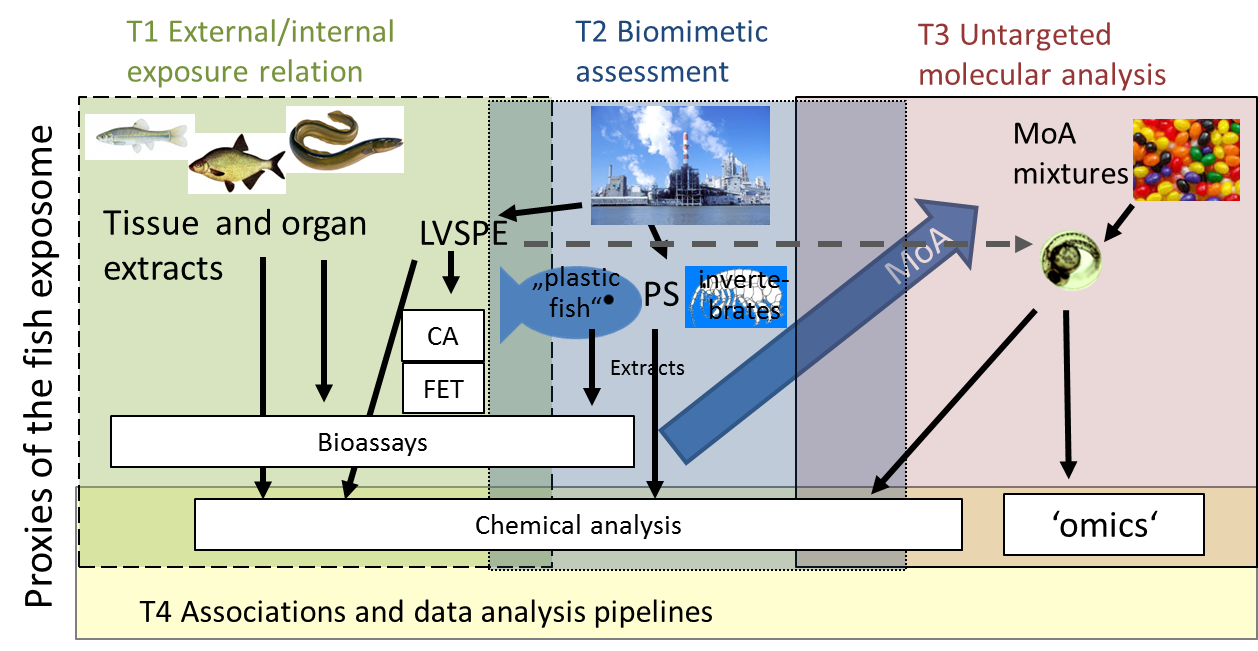Proxies of the Eco-Exposome
The doctoral college of the Research Unit Chemicals in the Environment
The exposome approach was developed to improve understanding of the totality of exposure including exogenous as well as internal chemicals generated in response to external factors. For human health assessment this approach was considered as useful to comprehensively describe the impact of anthropogenic chemicals and to discriminate them from lifestyle factors and genetic predispositions. Our extended definition of the exposome incorporates the assessment of biological effects - to improve exposure diagnostics by complementing chemical analysis, and to account for complex mixture effects. Furthermore, biological effect assessment would enable to establish causal links and to infer adverse effects from complex exposure situations.
The (extended) exposome approach can be transferred from human health to ecotoxicology by using a closely related definition with an organism-specific perspective. Hence, an eco-exposome approach would require assessing the totality of internal exposure of a specific species using a combined chemical and biological assessment in order to identify toxicologically relevant exposures and to infer adverse outcomes. Such an approach would overcome limitations of an assessment that is exclusively based on either chemical or biological methods and would address mixtures of chemicals. The assessment of the exposome could be facilitated by proxies – provided that we understand the relation of external, internal exposure, their time resolution, biological effects and adverse outcomes.
Knowledge gaps
There is no approach that has tried to apply an in-depth, mechanistic and coordinated comprehensive analysis as is foreseen here using fish as the central species. With our proposal we aim at a detailed and comprehensive understanding of the fish exposome, in order to infer proxies that could be used for an eco-exposome assessment, for instance in environmental monitoring and surveillance.
Research
Deriving proxies for the eco-exposome requires analysis of the relationships between internal and external exposure of complex environmental mixtures, how relevant exposures can be captured appropriately and how they translate to biological effects. Ultimately we aim to contribute to the development of advanced monitoring tools that allow an improved assessment of the environment status. We make use of the complementary expertise of the departments BIOTOX, OEKOTOX, MOLSYB, OEC, WANA and ZELLTOX , and established collaborations with internal and external partners in environmental monitoring projects for a comprehensive assessment that would allow deriving proxies. We address this by four doctoral projects, each targeting a specific question in the context of the eco-exposome approach:

Doctoral student:
Departments/external partners involved:
WANA
ZELLTOX
US EPA (external)
Doctoral student:
Departments/external partners involved:
MOLSYB
University St. Thomas, St. Paul, MN (external)
